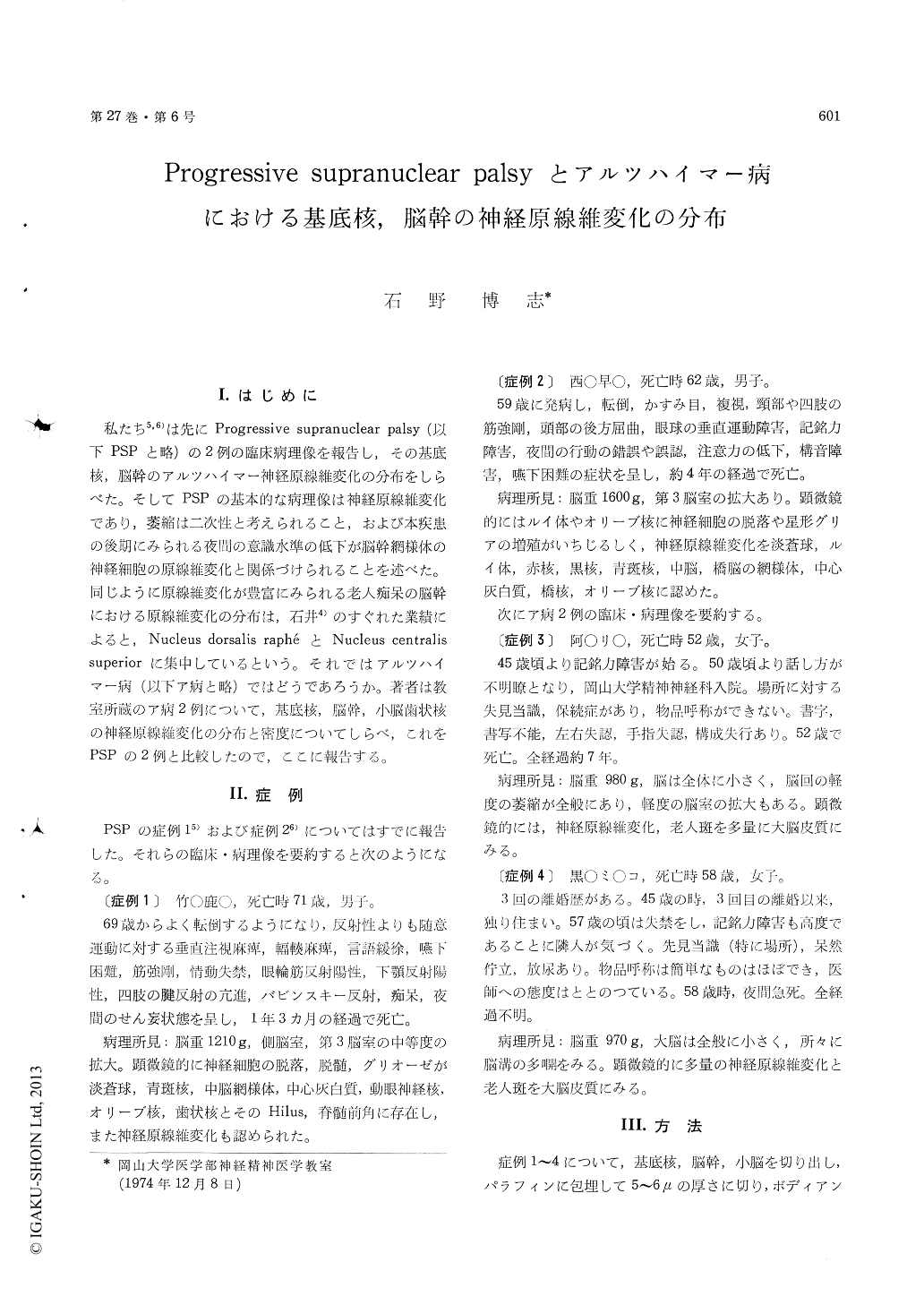Japanese
English
- 有料閲覧
- Abstract 文献概要
- 1ページ目 Look Inside
I.はじめに
私たち5,6)は先にProgressive supranuclear Palsy (以下PSPと略)の2例の臨床病理像を報告し,その基底核,脳幹のアルツハイマー神経原線維変化の分布をしらべた。そしてPSPの基本的な病理像は神経原線維変化であり,萎縮は二次性と考えられること,および本疾患の後期にみられる夜間の意識水準の低下が脳幹網様体の神経細胞の原線維変化と関係づけられることを述べた。同じように原線維変化が豊富にみられる老人痴呆の脳幹における原線維変化の分布は,石井4)のすぐれた業績によると,Nucleus dorsalis raphéとNucleus centralissuperiorに集中しているという。それではアルツハイマー病(以下ア病と略)ではどうであろうか。著者は教室所蔵のア病2例について,基底核,脳幹,小脳歯状核の神経原線維変化の分布と密度についてしらべ,これをPSPの2例と比較したので,ここに報告する。
The author studied the distribution of neuro-fibrillary tangles in the basal ganglia and brain stem of progressive supranuclear palsy and Alzheimer's disease, with the result that almost no similarity in the distribution and density of neurofibrillary tangles exists between both diseases.
In two cases with progressive supranuclear palsy neurofibrillary tangles were found most numerously in the subthalamic nucleus. Next in order came the globus pallidus, reticular formation of mid brain, pons and medulla oblongata, pontine nuclei, locus coeruleus, red nucleus, substantia nigra, periaq-ueductal grey matter and olivary nuclei. Neuro-fibrillary tangles were rare in the thalamus.
In two cases with Alzheimer's disease neuro-fibrillary tangles were found most numerously in the nucleus mamilloinfundibularis, nucleus basilaris, nucleus dorsalis raphé, nucleus centralis superior, and next in order came the thalamus. They were found scarcely in the lenticular nuclei and reticular formation of the pons.
In both diseases almost no neurofibrillary tangles were found in the nucleus supraopticus, nucleus paraventricularis, nuclei tuberales and nuclei cor-poris mamillare.

Copyright © 1975, Igaku-Shoin Ltd. All rights reserved.


